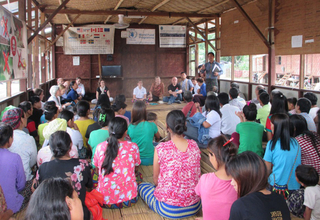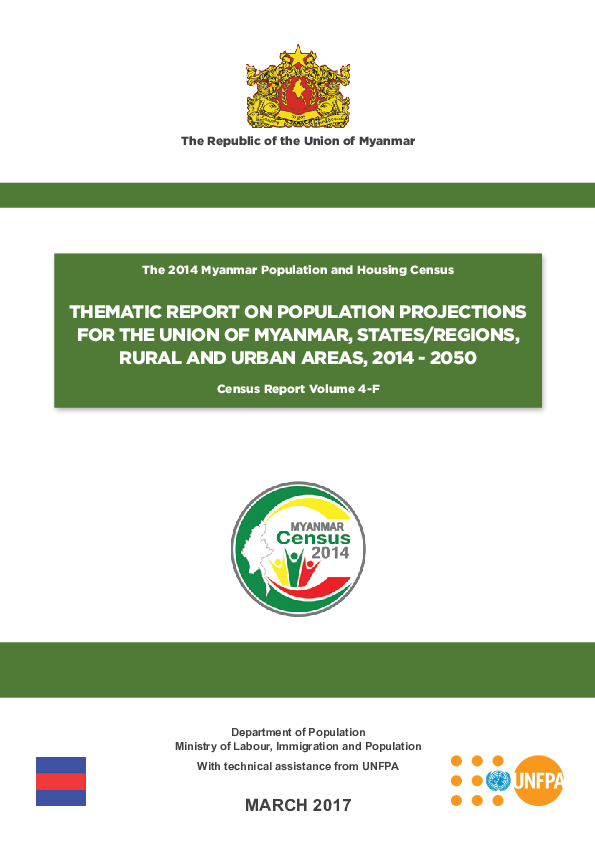Police officer Myint Myint Aye keenly watched the episode on ending domestic violence of the TV series on justice and rule of law issues “The Sun, the Moon and the Truth,” together with nearly 1,100 other police officers, a third of whom were women. On the screen, a police officer was speaking to an anxious housewife, who was being beaten by her husband, explaining the legal action she could take. As the police officer spoke gently to the housewife, Myint Myint Aye nodded: “That’s my kind of model police officer; caring, understanding and protective.”
Myint Myint Aye was attending a police officer training course organised by the United Nations Population Fund (UNFPA) and the Myanmar Anti-Narcotic Association (MANA) held in Pyin Oo Lwin, Mandalay region on 30th May 2015. This was the first time she and her colleagues were taught about gender based violence, HIV, reproductive health and family planning.
While watching the short film, she was taken back to the time when she was a ninth grade student. It was the first time she witnessed domestic violence. Myint Myint Aye recalled: “One day, I was visiting a friend in town and I saw a husband who was arguing with his wife. He quickly resorted to beating her. In the short time it took her neighbours to intervene, she had already been severely beaten. She was left with a swollen face and red welts on her arms. I later learned that her husband had just been reprimanded by the ward administration. I thought it was very unfair. Violence of this kind continues with impunity. Such incidents also make imprints on the mind.” It was the memory of this that reaffirmed Myint Myint Aye’s resolve to become a police officer.
Myint Myint Aye comes from a family with a long record of service in the police force. Her late father was a police sergeant and since childhood her ambition had been to become a police officer. She joined the Myanmar Police Force in 1997, at the age of 18. Her first posting was in Kalay, a north western town in Sagaing Division, also known as the gateway to the Chin Hills.
Her duty station was at the airport, a major transit point for smuggling drugs and other high end consumer goods; East to China and West to India. Myint Myint Aye said: “Sometimes, I had to assist in searching female suspects, or stand guard during an interrogation. As a woman, I empathised with their anxiety and discomfort. I always tried to make the women feel as comfortable as possible.”
In 2011, Myint Myint Aye was transferred to Myitkyina, the capital of Kachin State. She was assigned to the Anti-Narcotic Squad. The town, some miles west to the Chinese border, was also notorious for drug smuggling. She said: “There were 200, or even up to 300 arrests each year.” She remembered one arrest: “One day, we were told to go to a certain neighbourhood and arrest a suspected drug dealer. I went along because the suspect was a woman. While searching the suspect, we seized some illegal stimulant tablets. In my search I also discovered some scars, some were old and some were new, on her body. The suspect said that her husband, also a drug addict, beat her whenever he needed drugs. Although she was a drug dealer, I sympathised with this woman and helped her as much as I could during the interrogation. As a married woman, I could understand her feelings and emotions.”
Myint Myint Aye said what she most liked about the workshop was the talk on gender based violence. She said it increased her commitment to help women, both in the service and in communities as well. As a police officer she could now explain to women their rights and the legal actions that can be taken in cases of gender based violence. She added this would also help build a more positive image of the Myanmar Police Force. When asked about her future, she replied: “One thing I will do for certain is be a responsible, protective, and more caring as a police officer for our citizens.”



